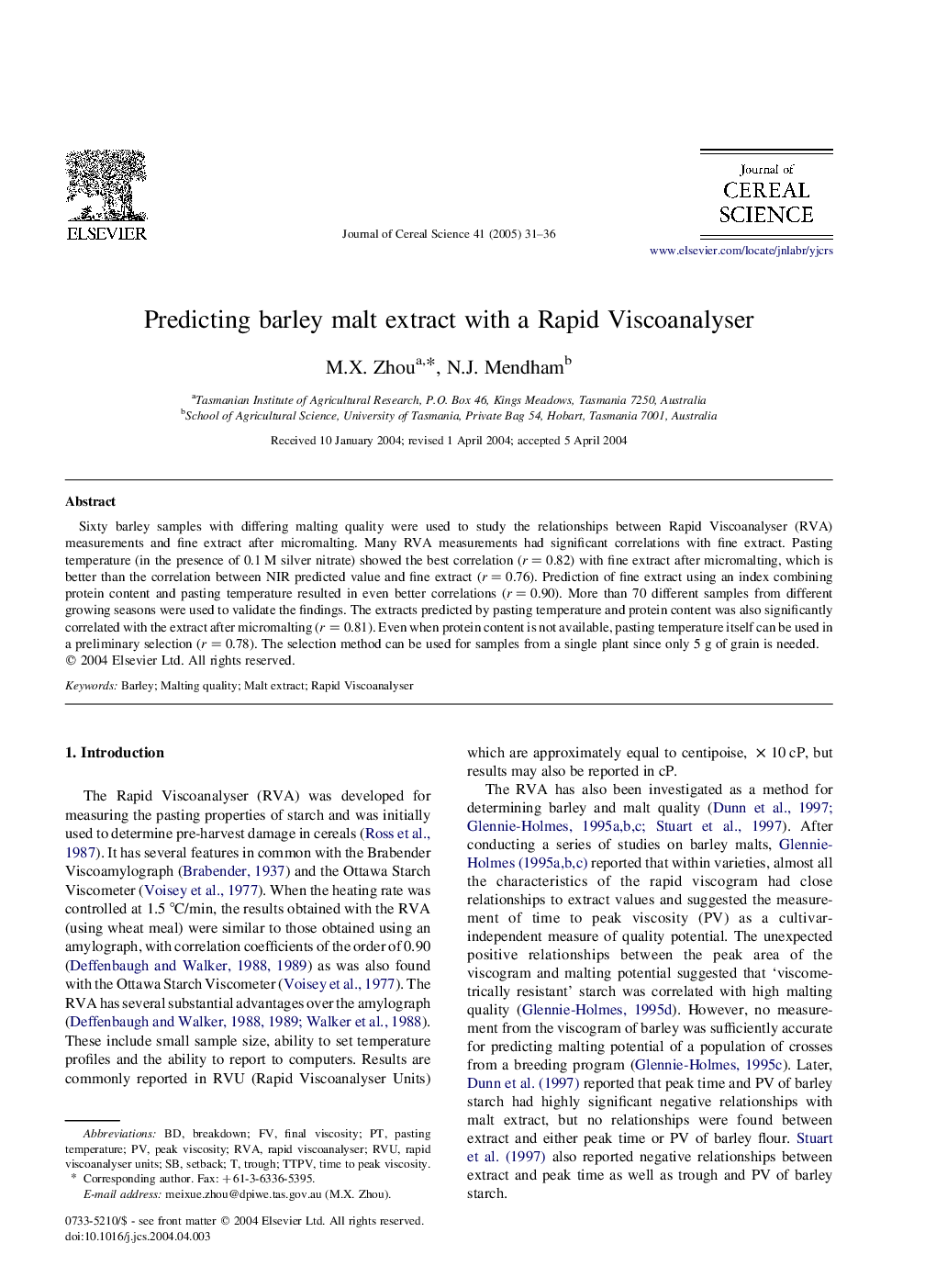| Article ID | Journal | Published Year | Pages | File Type |
|---|---|---|---|---|
| 9474552 | Journal of Cereal Science | 2005 | 6 Pages |
Abstract
Sixty barley samples with differing malting quality were used to study the relationships between Rapid Viscoanalyser (RVA) measurements and fine extract after micromalting. Many RVA measurements had significant correlations with fine extract. Pasting temperature (in the presence of 0.1 M silver nitrate) showed the best correlation (r=0.82) with fine extract after micromalting, which is better than the correlation between NIR predicted value and fine extract (r=0.76). Prediction of fine extract using an index combining protein content and pasting temperature resulted in even better correlations (r=0.90). More than 70 different samples from different growing seasons were used to validate the findings. The extracts predicted by pasting temperature and protein content was also significantly correlated with the extract after micromalting (r=0.81). Even when protein content is not available, pasting temperature itself can be used in a preliminary selection (r=0.78). The selection method can be used for samples from a single plant since only 5 g of grain is needed.
Keywords
Related Topics
Life Sciences
Agricultural and Biological Sciences
Agronomy and Crop Science
Authors
M.X. Zhou, N.J. Mendham,
